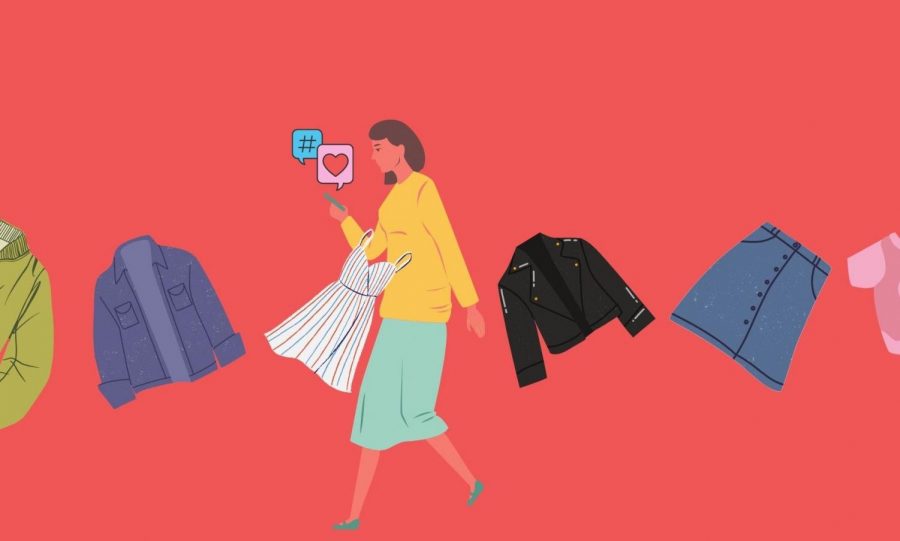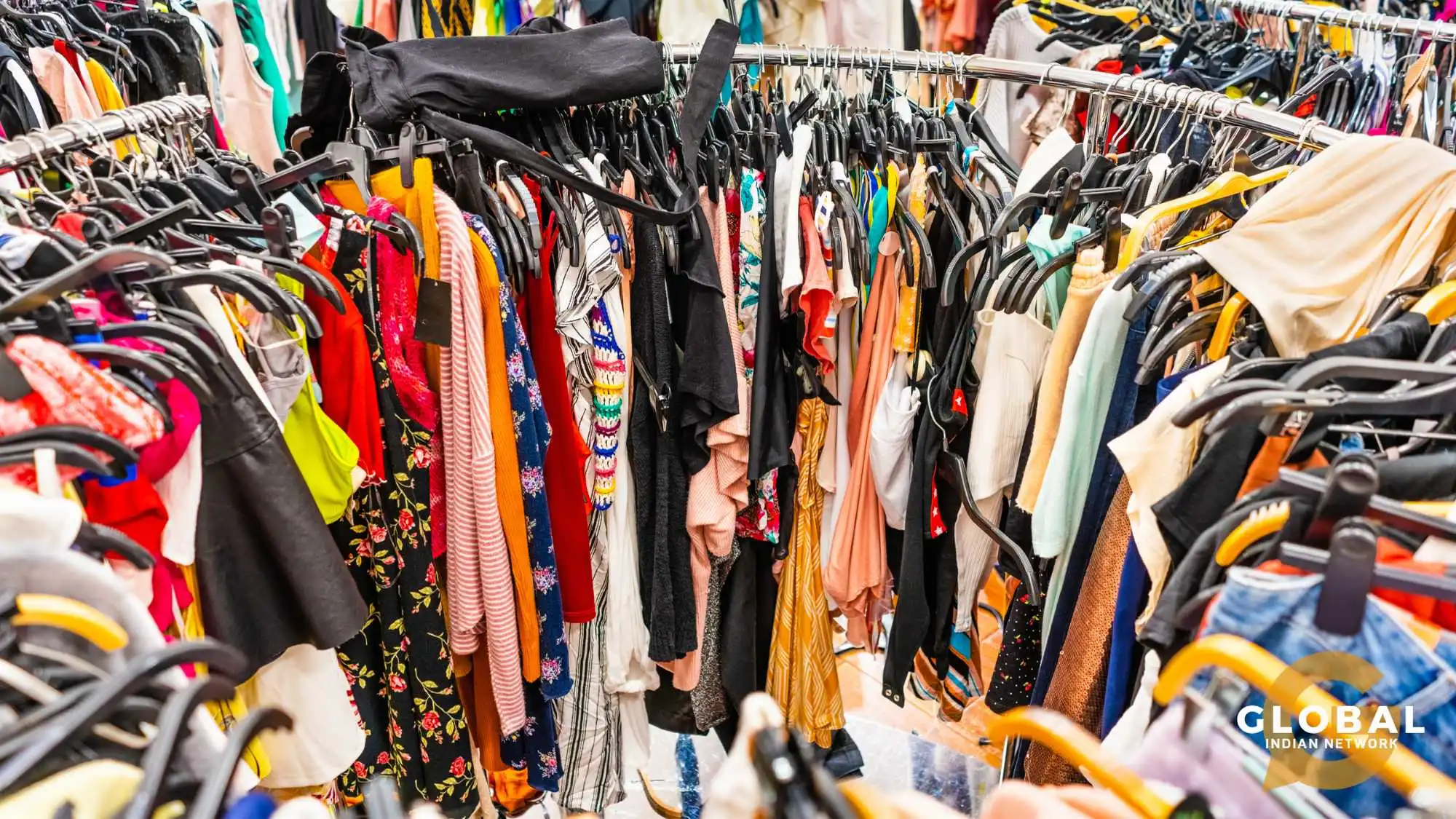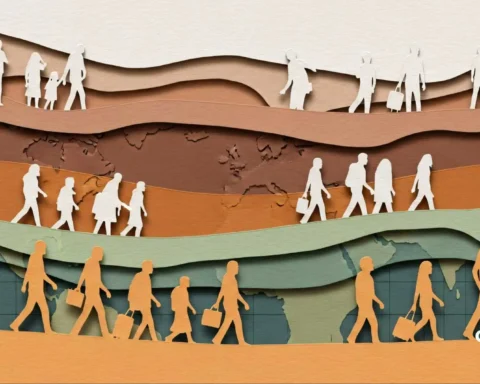In the current digital world, the intersection of fast fashion and social media has rapidly amplified consumerism to unhealthy levels.
This combination of short trend cycles and the powerful impact of social media influencers has completely transformed the way consumers shop. It has built a cycle of overconsumption, totally altering consumer values.
This blog discusses how fast fashion and social media have redefined consumerism, the detrimental impact of this relationship, and how to address it.

Table of Contents
Fast Fashion Explained: Everything You Need to Know
In simple words, fast fashion is affordable yet trendy clothing that takes inspiration from the catwalk or celebrities and makes them available to the general public at breakneck speeds.
The main aim is to bring the trendiest styles to the market as quickly as possible, allowing shoppers to get their hands on them while they are still available. Unfortunately, once the trend dies, they discard them.
Fast fashion brands thrive on the idea that outfit repetitions are a fashion faux pas, and being trendy means wearing a new and latest outfit every time.

History of Fast Fashion

Before we begin changing the concept of fast fashion, we need to understand where it comes from.
The fashion landscape was slow and sustainable until the 1800s. People acquired their raw materials, such as wool or leather, woven them, and made their clothes according to their personal style.
It was only during the Industrial Revolution that machines such as the sewing machine made their appearance. Clothes became easier and cheaper to make, giving rise to several dressmaking shops that catered to the middle classes.
By the 1960s and 1970s, the youth began creating new trends, enabling fashion to become a form of self-expression. However, there was still a difference between high fashion and high street.
Affordable clothing and high fashion consumption reached their peak in the 1990s and 2000s. With the advent of the digital age, online shopping thrived, and fast fashion retailers such as H&M and Zara took over the high street. They mimicked the looks and design patterns of top fashion houses and reproduced them swiftly at cheap prices.
With everybody being able to shop for the kind of clothes they wanted with a few clicks on the phone, it’s understandable how the fast fashion phenomenon and unnecessary consumption started rolling.
The Rapid Rise of Social Media

It’s no surprise that social media has redefined the way we interact with one another.
Social media platforms such as TikTok, Pinterest, and Instagram are major influencers of consumer behaviour. Influencers and celebrities use these platforms not only to share but also to create new fashion trends, often in collaboration with fashion brands.
Social media platforms accelerate the spread of these trends by leveraging algorithms to disseminate trending content, which often builds up a sense of urgency in consumers to stay updated with the latest fashion quickly before it dies down.
Additionally, this sense of urgency feeds consumers’ impulse buying, further contributing to the fast fashion cycle.
Fast Fashion and Social Media: The Perfect Storm
The intersection of fast fashion and social media is like a loop that intensifies consumerism.
This is because social media pushes the speed at which trends rise and fade. These days, a trend can go viral overnight, and fashion brands are quickly capitalizing on this feature. This rapid production cycle leads to rapid consumption since consumers are continuously exposed to new styles.
Influencers and celebrities are the biggest ambassadors of fast fashion, showcasing the latest trends with pomp and glamour. Their endorsements have a massive influence on their follower’s purchasing habits, creating demand for items that would’ve otherwise been in the shadows.
Moreover, social media algorithms are quite smart about pushing forward content that will yield high engagement. This content typically includes posts about new fashion styles and fashion hauls. This forms a cycle where the audience is constantly reinforced with the desire to buy products and catch up with trends.
However, it’s not just social media and fast fashion, fashion influencers, and the fashion industry that contribute to the fast fashion phenomenon; consumers themselves contribute by imitating influencers and sharing their outfit discoveries. This further fuels the demand for new styles as people try to replicate the looks they see online.

The Impact of Fast Fashion and Social Media on Consumer Behavior
With its influencer culture and entertaining content such as haul videos, It’s no secret that social media fuels fast fashion. The relationship between fast fashion and social media has several harmful effects on consumer behaviour.
Increased Consumption Levels
The nonstop exposure to new trends and the comfort of shopping online have both led to heightened levels of consumption. Most consumers now see clothing as disposable and meant to be frequently discarded after a few wears.
Shorter Wardrobe Lifespan
The speedy turnover of fashion trends is causing chaos in everyone’s wardrobes. Due to the quick nature of fast fashion and the urgency it creates, consumers feel compelled to regularly update their wardrobes to stay trendy, causing them to buy large amounts of clothing frequently at low prices.
Impulse Purchasing
Social media‘s influence on shopping often leads to impulse purchases. The comfort of buying directly through digital platforms such as social media apps means that social media users can get instant gratification without considering the long-term environmental impact of their actions.
Status and Identity
Clothing and style are increasingly being tied to personal identity and social status. Social media has amplified this association by underscoring fashion choices as indicators of individualism and social standing. This can cause consumers to purchase new items to build and preserve their perceived status.
Environmental Concerns of the Fast Fashion and Social Media Duo

The fast fashion model, driven by social media, has numerous negative impacts on the environment.
Firstly, the fast fashion industry plays a major role in environmental degradation. The quick production of clothing causes massive waste generation since unsold items are often destroyed and discarded. Moreover, clothing factories usually use synthetic fabrics and dyes that contribute to pollution. This disposable nature of fast fashion also leads to textile waste, which contributes to landfill overflow.
Moreover, fast fashion brands often depend on low-wage labour sourced from developing countries, which have unsafe working conditions and frequently violate labour rights. The pressure on garment workers to produce clothing quickly can lead to exploitation.
How to Minimize the Environmental Implications of Fast Fashion and Social Media
Consumers can adopt several approaches to mitigate the negative effects of fast fashion and social media.
Promote Sustainable Fashion
Consumers can begin to support sustainable fashion brands that focus on ethical production practices and use eco-friendly materials. Awareness campaigns and educational events on the harmful effects of fast fashion can help alter consumer preferences towards more sustainable fashion practices and slow fashion.
Buy Second-Hand
Purchasing second-hand clothing is an excellent method of decreasing waste and extending the life of discarded garments. Social media platforms can promote these markets and make them more accessible to fashion enthusiasts.
Fashion Mindfulness
Consumers can be encouraged to implement a more mindful approach to fashion by looking at quality over quantity and investing in more durable pieces of clothing rather than chasing behind short trends. Social media influencers can use their power to nurture a more conscious and mindful clothing style.
Governmental Action
Governments and other regulatory bodies can establish policies to acknowledge labour and environmental concerns linked to fast fashion. Regulations on waste management and labour standards can assist companies in enhancing their industry practices.
ALSO READ:
- The Ethics of Consumerism
- Examining the Impact of Social Media Influencers on Consumer Behavior
- Influencers: Moulding the Social Media Sphere
Conclusion
The duo of fast fashion and social media has undoubtedly played a pivotal role in amplifying consumerism to insane levels, creating a storm of short trend cycles and influencer culture, redefining how consumers shop and altering their values and behaviours.
However, while the glamour of fast fashion and social media trends are difficult to avoid, it is crucial to understand the implications of our consumption patterns.
By gradually shifting towards more sustainable and mindful fashion preferences, we can build the path to healthier and more balanced consumerism that benefits both consumers and the planet.

FAQs
How is social media affecting fashion?
Social Media’s impact on fashion has begun a storm in the traditional cycle of fashion trends. It has transformed how trends are created and followed, accelerating fast fashion and giving rise to consumerism.
What are the four elements of fast fashion?
Cheapness, quickness, trendiness, and mass production are the four characteristics of fast fashion.
Who is the target audience for fast fashion?
The target audience for fast fashion is the youth between 16-24 years of age.










[…] between narcissism and social networking sites. Now, let us understand how this problematic social media leads to narcissism […]